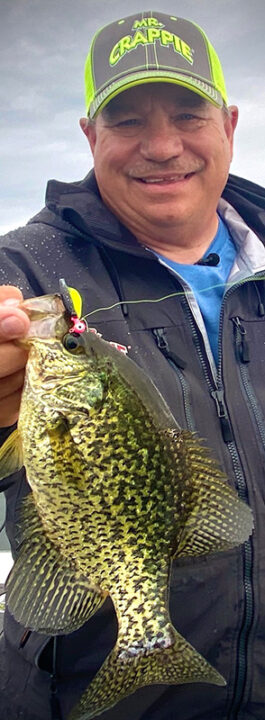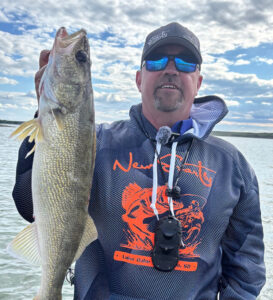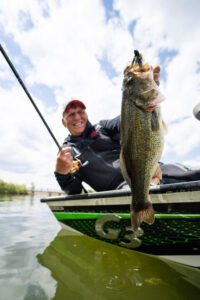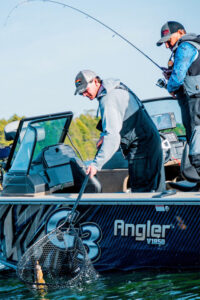By Mike Frisch
If you’re an anxious angler like me, you can’t wait for ice out to head for your favorite crappie lake to wet a line in open water for the season’s first time. Those just after ice out trips sometimes produce good fishing, but at other times the fish seem to be non-existent. The fact is that as the water warms and weather stabilizes during spring, the crappie bite usually gets better.
Most crappie anglers know that finding the warmest, shallow water during spring up until the spawn is usually key. Warming waters, usually shallow waters, show the first signs of open-water life and draw hungry crappies. Shallow, dark-bottomed bays are classic early season spots, as are boat channels, marinas, and other shallow spots that warm quickly.
Just after ice out, the crappies will invade these areas looking to feed, particularly on warm, sunny days. The appearance of a spring cold front, however, often sends these fish scurrying off to deeper waters where the water temperature is more stable. As spring progresses and water temperatures continue to rise and the weather moderates, crappies spend more and more time feeding in the shallows.
Finding spring crappies involves staying on the move and searching various shallow spots. I’ll often hit several spots during a fishing day, keeping an eye on the temperature gauge on my sonar unit in the boat when going from spot-to-spot. Shore anglers, though more limited in mobility, often do well this time of the year too as shallow areas that hold fish are often accessible from the bank now too.
Small panfish jigs tipped with crappie minnows and fished below bobbers usually produce fish, particularly when the fish are finicky. Recently, I have become a big fan of a small hand tied feather jig called a Mr. Crappie Shoo Shiner for my crappie fishing. This jig produces action that finicky crappies seem to love, and it comes in a variety of “fishy” colors. Pitching it in and around shallow cover often produces crappies, though bonus big bluegills eat it too.
Bobbers and jigs go hand in hand for spring crappies, however, a cast and retrieve approach can also yield good catches on some days and can be a good “search” presentation as well. For this method, I’ll rig a Mr. Crappie ShadPole on a small jig, cast it out, and slowly retrieve it back.
Regardless whether fishing a bobber or cast and retrieve fishing, using your tolling motor to quietly approach and work potential fishing spots is usually important now. Shallow, spring crappies are notorious for being spooky and avoiding excess noise that may easily scatter these wily fish will probably up your catch.
Spring and crappies go hand in hand, especially as the season progresses and the weather stabilizes. Following some of the tips just provided can, in fact, probably help you capitalize on the hot mid-spring crappie bite this season!
As always, good luck on the water and remember to include a youngster in your next outdoor adventure!
Mike Frisch hosts the popular Fishing the Midwest TV series. Visit www.fishingthemidwest to see more fishing tips and view recent TV episodes as well!
Photo – Wally Marshall, Mr. Crappie, cast a ShadPole to catch this crappie.





